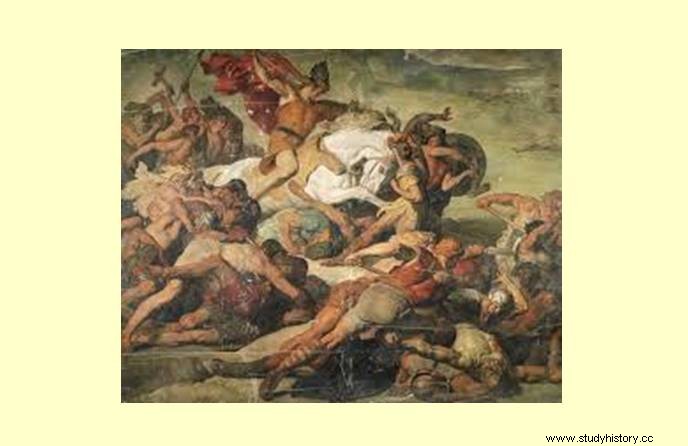
In AD 305, Constantine (I) became the ruler of Rome. He is also called Constantine the Great. From the age of 14, he began participating in military campaigns with Emperor Diocletian. Since the time of the previous emperor Diocletian, the Great Roman Empire had been divided into two great provinces - the Eastern Roman Empire and the Western Roman Empire, and Emperor Diocletian used to live in Croatia, located in the Eastern Roman Empire, instead of in Rome.
Transfer of the capital of the Great Roman Empire
When Constantine became the lord of the Great Roman Empire, he moved his capital from Rome in AD 324 to the eastern border of his empire on the banks of the Daniale Pass between the Black Sea and the Mediterranean Sea 'Byzantia' (Byzantine) strong> Named city so that he could lead the fighting armies on the eastern frontiers of his empire and keep them under control.
After some time he visited 'Constantinople' near Byzantia. He laid the foundation stone of a new city and made it his capital. Later this city came to be known as Kustuntuniya. Emperor Constantine exempted the Catholic Church and its clergy from taxes and granted them many privileges.
Co-rulers appointed for Rome by Constantinople
With the move of the capital from Rome to Byzantine or Constantinople, the possibilities of division of the Roman Empire became stronger. However, co-rulers for the Western Roman Empire continued to be appointed by the emperors of Constantinople. Valerius Severus was proclaimed Junior Emperor (Caesar) of Rome by Emperor Constantine in AD 306
Forced occupation of Rome by Maxentius
In AD 307, he was captured by Valerius Severus, the authorized ruler of Rome, by a Ramon noble named Maxentius and forced him to commit suicide. After this Maxentius forcibly took over the capital Rome and the Western Roman Empire.
In AD 308, Emperor Constantine (I) of Constantinople declared his maternal uncle Licinius (I) emperor of Rome, but Maxentius did not vacate Rome. Finally, in AD 312, Emperor Constantine killed Maxentius at the Battle of Milivian Bridge.
Christianity embraced by Constantine
Emperor Constantine was tolerant of Christianity but he himself professed the pagan religion. By this period some propagators of Christianity had been successful in establishing their influence in the government system. According to some historians, Emperor Constantine was forcibly converted to Christianity on his deathbed in AD 337.
After this Christianity was recognized as the state religion. After this, the influence of Christianity began to increase not only in the Eastern Roman Empire but also in the Western Roman Empire and the capital Rome, and the polytheistic and pagan Roman religion (Pagan religion) prevalent since ancient times was banned.
The ancient polytheistic Roman religion became extinct from the Roman Empire within a few years due to state coercion. Thus, after an initial neglect of about three hundred years, the power of the bishop of Rome increased as bishop and as pope he also gained the power to influence the administration of Rome.
Constantine's successor
After the death of Emperor Constantine (I) in AD 337, his son Constantine (II) became the ruler of Rome. In AD 340 he was killed while fighting against his brother Constance (I). From AD 340-56, Constantine (I) son of Constantine (I) and by AD 356-61 Constantius (II) another son of Constantine (II) became the lord of the Western Roman Empire. After that Prince Julian of this family became the king of Rome.
Emperor Julian died in a battle in AD 363. From then on, the Roman Empire declined rapidly. After Julian, the commander of Julian's army, Jovian became the king of Rome, but he died eight months later at the age of 33 due to suffocation due to fire and smoke. All these kings were the rulers of both the Eastern Roman Empire and the Western Roman Empire. Later, the rulers of the Eastern and Western Empires were again divided into different rulers.
Although the ruler of the Western Empire was appointed as co-ruler by the Eastern Emperor, the Eastern Emperor's control over the Western Empire was nominal.
